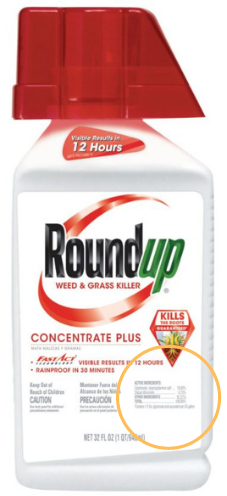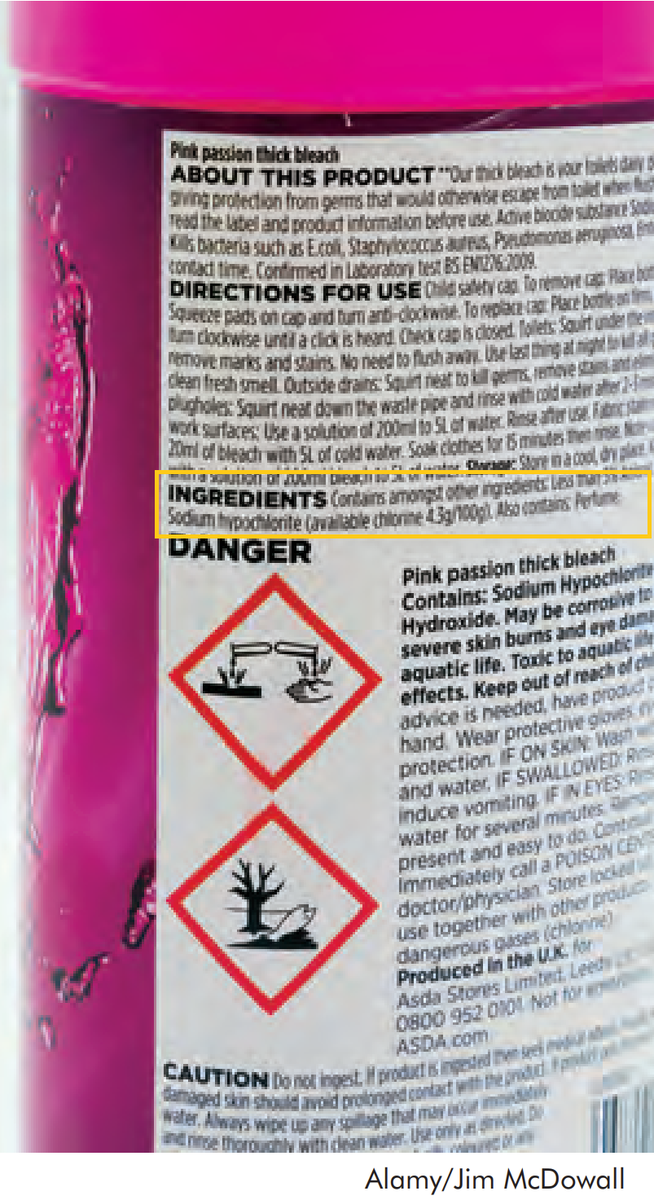Gateway on Pesticide Hazards and Safe Pest Management
How To Find Ingredients in Pesticide Products
Beyond Pesticides offers resources below to evaluate the health and ecological effects of specific chemical exposure from ACTIVE INGREDIENTS in pesticide products, as well as regulatory information and supporting scientific documents. Because various pesticide products can contain more than one active ingredient, it is important to READ the LABEL to determine chemical components.
With 192 different active ingredients and counting, it is essential to establish the connection between the use of these chemicals and their respective hazards.
View the step-by-step guide on how to search for the active ingredient(s) in pesticide products below:
- Go to U.S. EPA's Pesticide Product and Label System and enter the product name. The generic product name may vary.
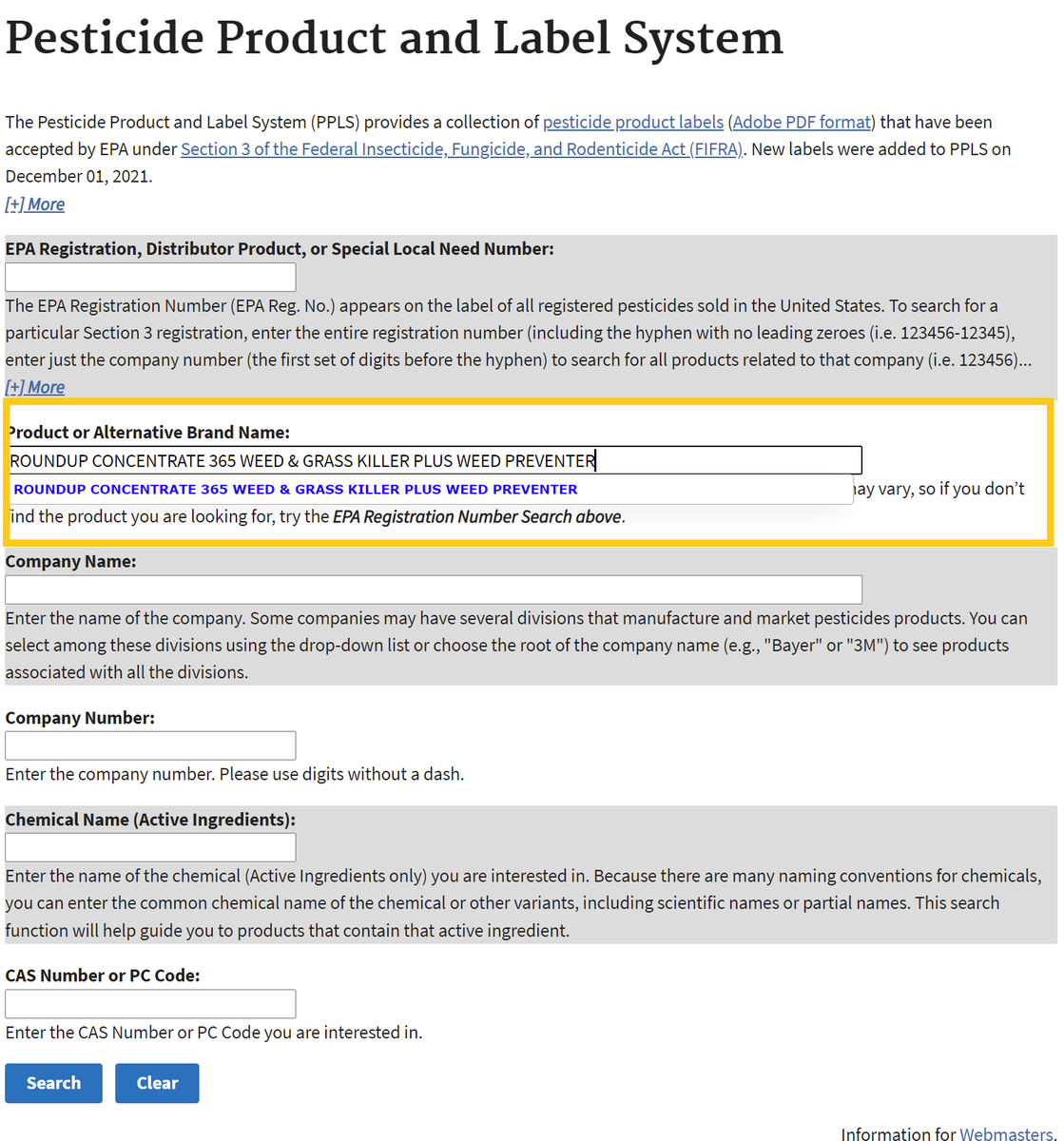
- After searching, click on the chemical ingredients tab or the link for the most recent label to find Active Ingredients.
Chemical List Label List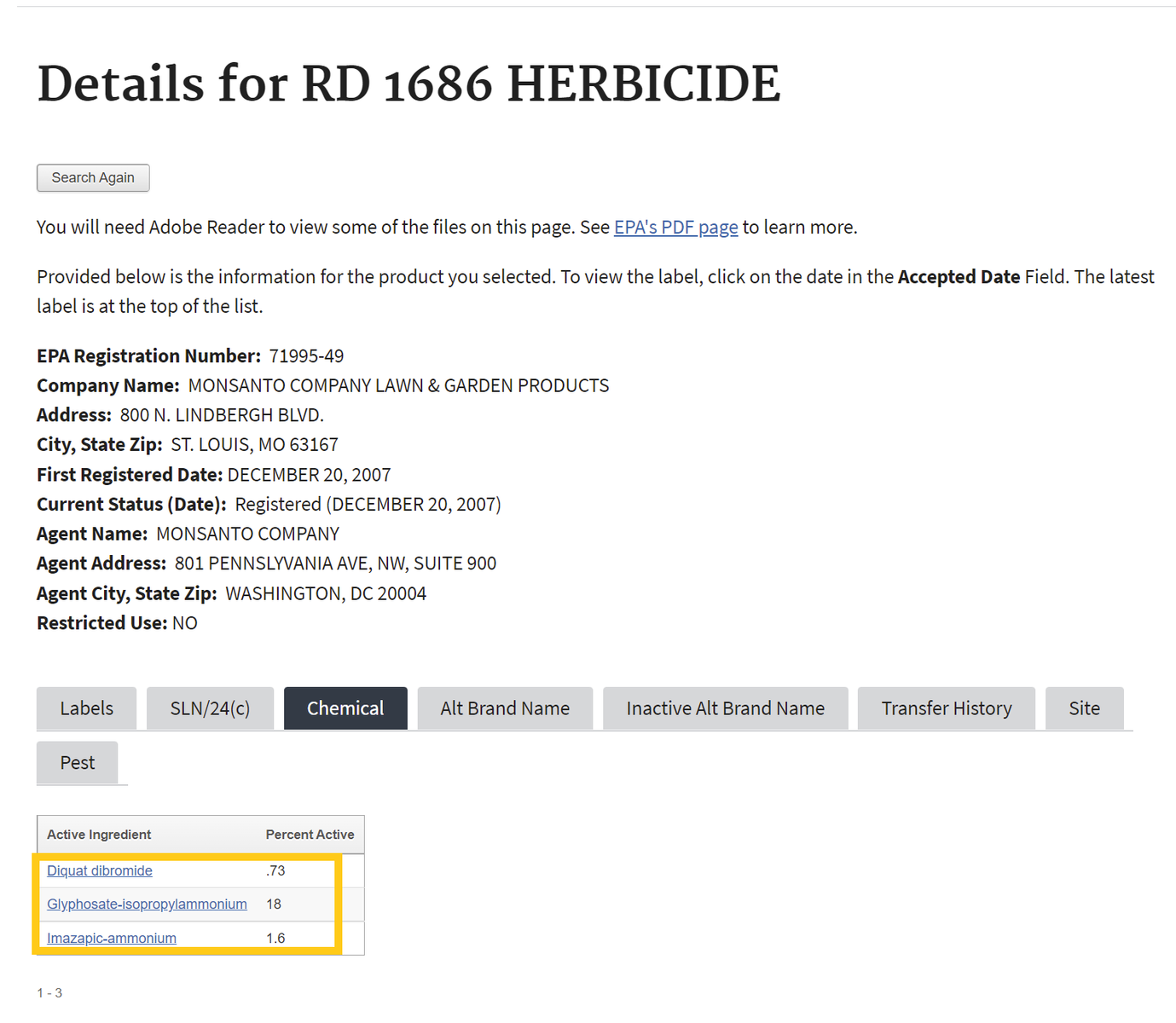
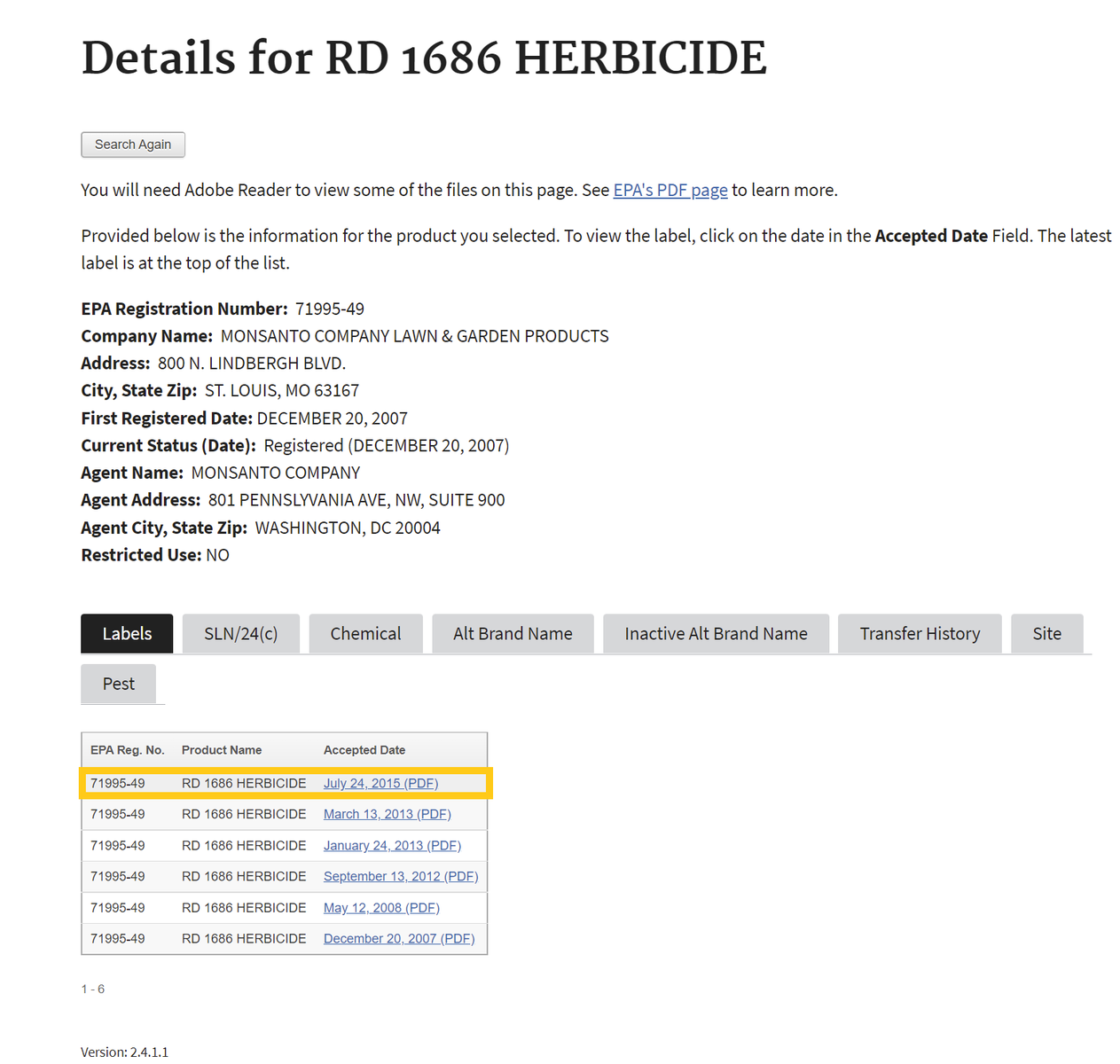
If one selects the chemical ingredients tab, skip to Step 4 . If not, proceed to step number 3 - To find the active ingredient(s) on the label, search for the page in the document containing the date of registration. Usually, the active ingredients section occurs within the first few pages of the label document.
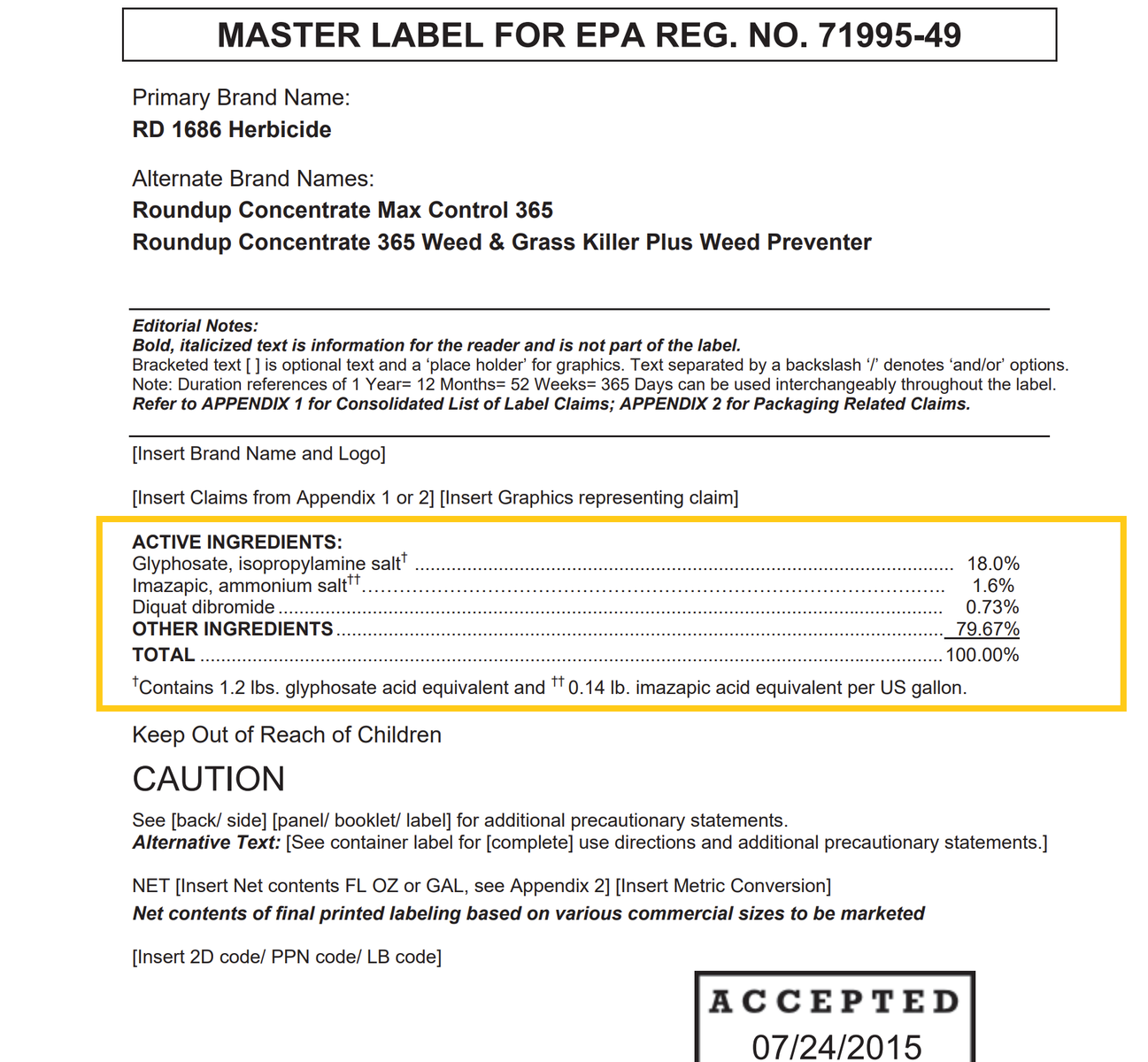
- Return to the Beyond Pesticides Gateway and search for the active ingredient name in the yellow box to the right or from the list below.
Pentachlorophenol
General Information
- Product Names:
- Chemical Class: Chlorophenol compound
- Uses: Restricted use heavy duty wood preservative (fungicide, bactericide, herbicide, molluscicide, algaecide and insecticide) targets carpenter ants, mold, powderpost beetles, termites, wood rot/decaying fungus, wood rot/decaying organisms, wood stain fungus.
- Alternatives: Wood preservative
- Beyond Pesticides rating: Toxic
Health and Environmental Effects
- Cancer: Probable (15)
- Endocrine Disruption: Probable (5)
- Reproductive Effects: Yes (31)
- Neurotoxicity: Yes (31)
- Kidney/Liver Damage: Yes (31)
- Sensitizer/ Irritant: Yes (31)
- Birth/Developmental: Yes (31)
- Detected in Groundwater: Yes (31)
- Potential Leacher: Yes (31)
- Toxic to Birds: Yes (40)
- Toxic to Fish/Aquatic Organisms: Yes (31)
- Toxic to Bees: Not documented
Additional Information
- Regulatory Status:
- EPA Reregistration Eligibility Decision (RED) signed (9/2008)
- Beyond Pesticides' Revised Risk Assessment comments (6/2008)
- Supporting information:
- Wood Preservatives Campaign (Beyond Pesticides)
- Poison Poles (Beyond Pesticides, 1999)
- Pole Pollution (Beyond Pesticides, 1997)
- NCAP Pentachlorophenol Factsheet (Northwest Coalition for Alternatives to Pesticides)
- Extoxnet Pentachlorophenol Factsheet (Extension Toxicology Network)
- PAN Pesticides Database:Pentachlorophenol (Pesticide Action Network)
- Scorecard Pentachlorophenol Factsheet (The Pollution Information Site)
- Pentachlorophenol Factsheet (Washington Toxics Coalition)
- Studies:
- Identifying childhood pesticide exposure trajectories and critical window associated with behavioral problems at 10 years of age: Findings from SMBCS. Ding, J. et al. (2024) Identifying childhood pesticide exposure trajectories and critical window associated with behavioral problems at 10 years of age: Findings from SMBCS, Environment International. Available at: https://www.sciencedirect.com/science/article/pii/S0160412024006652.
- Pesticide-Induced Inflammation at a Glance. Lopes-Ferreira, M. et al. (2023) ‘Pesticide-induced inflammation at a glance’, Toxics, 11(11), p. 896. doi:10.3390/toxics11110896.








.png)
